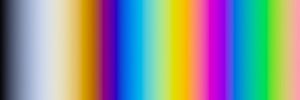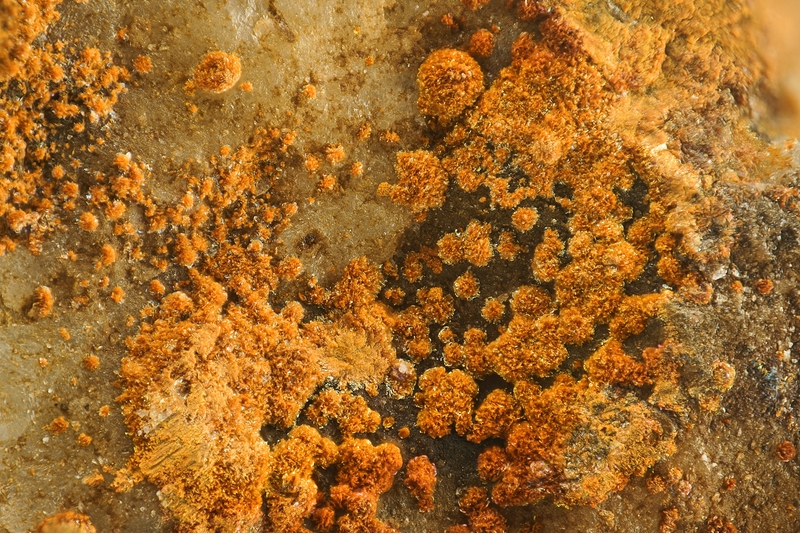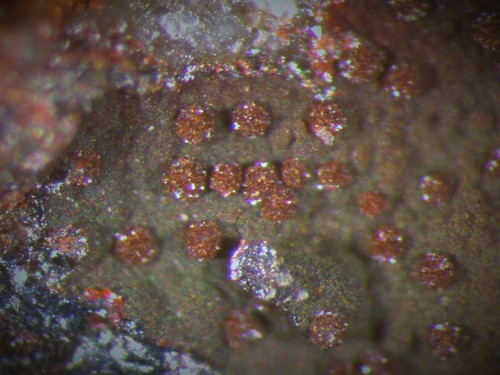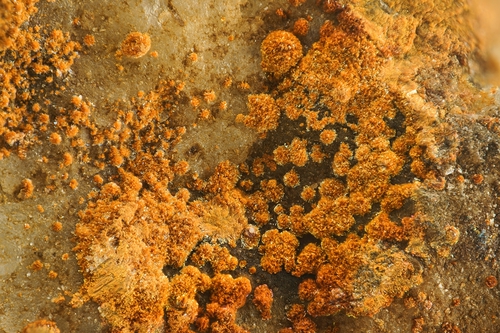Kuranakhite
A valid IMA mineral species
This page is currently not sponsored. Click here to sponsor this page.
About Kuranakhite
Formula:
PbMn4+Te6+O6
Colour:
Pale brown to nearly black
Lustre:
Vitreous
Hardness:
4 - 5
Specific Gravity:
6.72
Crystal System:
Orthorhombic
Name:
After the type locality.
Type Locality:
This page provides mineralogical data about Kuranakhite.
Unique Identifiers
Mindat ID:
2292
Long-form identifier:
mindat:1:1:2292:3
GUID
(UUID V4):
(UUID V4):
fe9213e7-9079-4f0d-9bf6-e62ff4f0ca54
IMA Classification of Kuranakhite
Approved
First published:
1975
Classification of Kuranakhite
4.DM.25
4 : OXIDES (Hydroxides, V[5,6] vanadates, arsenites, antimonites, bismuthites, sulfites, selenites, tellurites, iodates)
D : Metal: Oxygen = 1:2 and similar
M : With large (+- medium-sized) cations; unclassified
4 : OXIDES (Hydroxides, V[5,6] vanadates, arsenites, antimonites, bismuthites, sulfites, selenites, tellurites, iodates)
D : Metal: Oxygen = 1:2 and similar
M : With large (+- medium-sized) cations; unclassified
Dana 7th ed.:
33.2.1.1
33.2.1.1
33 : SELENATES AND TELLURATES
2 : (AB)m(XO6)·xH2O, where x can equal zero
33 : SELENATES AND TELLURATES
2 : (AB)m(XO6)·xH2O, where x can equal zero
28.4.15
28 : Selenites, Selenates, Tellurites, and Tellurates
4 : Tellurates
28 : Selenites, Selenates, Tellurites, and Tellurates
4 : Tellurates
Mineral Symbols
As of 2021 there are now IMA–CNMNC approved mineral symbols (abbreviations) for each mineral species, useful for tables and diagrams.
| Symbol | Source | Reference |
|---|---|---|
| Kkh | IMA–CNMNC | Warr, L.N. (2021). IMA–CNMNC approved mineral symbols. Mineralogical Magazine, 85(3), 291-320. doi:10.1180/mgm.2021.43 |
Physical Properties of Kuranakhite
Vitreous
Transparency:
Translucent
Colour:
Pale brown to nearly black
Streak:
Brown
Hardness:
4 - 5 on Mohs scale
Hardness:
VHN100=228 - 441 - Vickers
Tenacity:
Brittle
Density:
6.72(2) g/cm3 (Measured) 6.66 g/cm3 (Calculated)
Optical Data of Kuranakhite
Type:
Biaxial (+/-)
RI values:
nα = 1.952 - 1.960 nβ = 1.980 nγ = 2.002 - 2.010
Birefringence:
Weak; in rose tints.
Max Birefringence:
δ = 0.050

Image shows birefringence interference colour range (at 30µm thickness)
and does not take into account mineral colouration.
and does not take into account mineral colouration.
Surface Relief:
Very High
Anisotropism:
Distinct, bright blue to brown
Bireflectance:
Weak in air; distinct in oil, with rose tints
Reflectivity:
| Wavelength | R |
|---|---|
| 460nm | 24.4% |
| 540nm | 24.0% |
| 580nm | 24.5% |
| 660nm | 23.0% |
| 800nm | 21.6% |
Graph shows reflectance levels at different wavelengths (in nm). Top of box is 100%. Peak reflectance is 24.5%.
Colour in reflected light:
Light gray with bluish tint
Internal Reflections:
None
Chemistry of Kuranakhite
Mindat Formula:
PbMn4+Te6+O6
Elements listed:
Crystallography of Kuranakhite
Crystal System:
Orthorhombic
Cell Parameters:
a = 5.11(1) Å, b = 8.91(1) Å, c = 5.32(1) Å
Ratio:
a:b:c = 0.574 : 1 : 0.597
Unit Cell V:
242.22 ų (Calculated from Unit Cell)
Z:
2
Morphology:
As tiny grains to 0.25mm
Comment:
Space group may be C
X-Ray Powder Diffraction
Powder Diffraction Data:
| d-spacing | Intensity |
|---|---|
| 3.40 Å | (100) |
| 2.558 Å | (60) |
| 2.050 Å | (50) |
| 1.851 Å | (50) |
| 1.596 Å | (40) |
Geological Environment
Paragenetic Mode(s):
| Paragenetic Mode | Earliest Age (Ga) |
|---|---|
| Stage 7: Great Oxidation Event | <2.4 |
| 47e : [Vanadates, chromates, manganates] | |
| 47h : [Near-surface oxidized, dehydrated minerals] |
Geological Setting:
Gold quartz deposits
Type Occurrence of Kuranakhite
General Appearance of Type Material:
Grains generally 2-4 um.
Place of Conservation of Type Material:
A.E. Fersman Mineralogical Museum, Academy of Sciences, Moscow, Russia, 76494.
Geological Setting of Type Material:
In the oxidation zone of a gold-quartz deposit.
Associated Minerals at Type Locality:
Reference:
Yablokova, S.V., Dubakina, L.S., Dmitrik, A.L., Sokolova, G.V. (1975) Kuranakhite, a new supergene tellurium mineral. Zapiski Vsesoyuznogo Mineralogicheskogo Obshchestva: 104: 310-313.
Synonyms of Kuranakhite
Other Language Names for Kuranakhite
Related Minerals - Strunz-mindat Grouping
| 4.DM. | Bahariyaite | KMnO4 |
| 4.DM.05 | Rankamaite | (Na,K)3(Ta,Nb,Al)11(O,OH)31 |
| 4.DM.05 | Sosedkoite | (K,Na)5Al2(Ta,Nb)22O60 |
| 4.DM.15 | Cesplumtantite | (Cs,Na)2(Pb,Sb3+)3Ta8O24 |
| 4.DM.20 | Eyselite | Fe3+Ge4+3O7(OH) |
| 4.DM.30 | Gelosaite | BiMo6+(2-5x)Mo5+6xO7(OH) · H2O |
| 4.DM.30 | Mambertiite | BiMo5+2.80O8(OH) |
| 4.DM.35 | Ekebergite | ThFeNb2O8 |
| 4.DM.45 | Riesite | TiO2 |
| 4.DM.50 | Sardignaite | BiMo2O7(OH) · 2H2O |
| 4.DM.55 | Tewite | (K1.5◻0.5)(Te1.25W0.25◻0.5)W5O19 |
| 4.DM.60 | Wumuite | KAl0.33W2.67O9 |
| 4.DM.60 | Kingsgateite | ZrMo6+2O7(OH)2 · 2H2O |
Other Information
Notes:
Liberates chlorine when reacted with concentrated HCl. Does not react with standard etch reagents KOH, FeCl3, HgCl2, dilute HCl, dilute HNO3, but dissolves when heated with concentrated HCl or
aqua regia.
aqua regia.
Health Risks:
No information on health risks for this material has been entered into the database. You should always treat mineral specimens with care.
Internet Links for Kuranakhite
mindat.org URL:
https://www.mindat.org/min-2292.html
Please feel free to link to this page.
Please feel free to link to this page.
Search Engines:
External Links:
Mineral Dealers:
References for Kuranakhite
Localities for Kuranakhite
Locality List
 - This locality has map coordinates listed.
- This locality has map coordinates listed.
 - This locality has estimated coordinates.
ⓘ - Click for references and further information on this occurrence.
? - Indicates mineral may be doubtful at this locality.
- This locality has estimated coordinates.
ⓘ - Click for references and further information on this occurrence.
? - Indicates mineral may be doubtful at this locality.
 - Good crystals or important locality for species.
- Good crystals or important locality for species.
 - World class for species or very significant.
(TL) - Type Locality for a valid mineral species.
(FRL) - First Recorded Locality for everything else (eg varieties).
- World class for species or very significant.
(TL) - Type Locality for a valid mineral species.
(FRL) - First Recorded Locality for everything else (eg varieties).
All localities listed without proper references should be considered as questionable.
Canada | |
| Harris et al. (1973) +1 other reference |
China | |
| Xinchun Zhou et al. (1997) |
Mexico | |
| |
| Panczner (1987) | |
Russia | |
| Rakhimov et al. (2022) |
| Rakhimov et al. (2022) |
| Pekov (1998) +1 other reference |
| Kondratieva et al. (2021) | |
| Mills et al. (2010) +1 other reference | |
| Kasatkin et al. (2023) |
USA | |
| Marty et al. (2010) +1 other reference |
| Thorne (n.d.) | |
| Collected by and in the collection of ... | |
| Mike Scott S106030 from Cureton. |
| XRD analyzed by Dr. Rob Bowell. |
Quick NavTopAbout KuranakhiteUnique IdentifiersIMA Classification Classification Mineral SymbolsPhysical Properties Optical Data Chemistry Crystallography X-Ray Powder DiffractionGeological EnvironmentType Occurrence SynonymsOther LanguagesStrunz-MindatOther InformationInternet Links References Localities Locality List







 symbol to view information about a locality.
The
symbol to view information about a locality.
The 



Moctezuma Mine, Moctezuma, Moctezuma Municipality, Sonora, Mexico